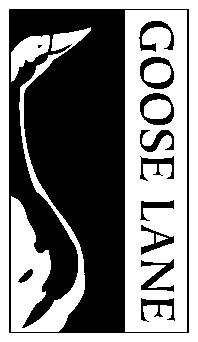Debra Komar is an award-winning author, who is in the process of releasing a new book in March from Dundurn Press called The Court of Better Fiction: Three Trials, Two Executions, and Arctic Sovereignty. Her previous books, all published with Goose Lane Editions, include The Ballad of Jacob Peck, The Bastard of Fort Stikine, The Lynching of Peter Wheeler, and Black River Road.
We caught up with her to discuss her focus on true crime and where does she find her ideas? Read on for more of this exclusive interview.
You’ve mentioned in previous interviews that you look back into old Canadian cases and choose from there. In Black River Road, you focused on an aspect of “character as evidence.” What else makes a case stand out enough for you to look into it?
John Munroe’s case is special for two reasons. He was the first person accused in Canada who truly defended himself (albeit through his lawyer — those accused could not speak in their own defence at that time). He was the first accused murderer who had the resources to actually mount a defence. Also, his defence was solely character-based. His lawyer argued that he was simply too good a person — too wealthy, educated, and moral — to have committed the crime. It is an argument that continues to be invoked in courtrooms today, even though character is not evidence.
Why true crime?
It isn’t the crime that truly fascinates me; it is our reactions to it and to those who commit it. While any crime in isolation seems small, the way in which society choses to address the crime — how we define “justice” — reveals what we value, what we believe, and how we see ourselves.
The last four true crime books you’ve written were published with year-long gaps. However I assume the research can be time consuming. How long do you spend researching these court cases alone?
Typically I spend about six months reading through the case files, finding supplemental sources, and reconstructing events. One of the more time-consuming aspects is finding the right case to answer the question I am posing. I often have to sift through a lot of possible cases before I find the right one.
When you’ve finally chosen the case you’re interested in writing about, what’s the first thing you decide to research?
I always start with the police files, autopsy reports, and trial transcripts: the official documentation. I then move through supplemental sources, like census information or birth/death records. The last place I look is media accounts of the events, which are often colourful but highly inaccurate. It can be fun (and informative) to compare a newspaper account of the trial to the actual transcript — sometimes it is hard to believe they are describing the same event.
In The Lynching of Peter Wheeler you specifically mention that when a crime has racial overtones, justice is rarely colour-blind. Are there examples of this changing in Canada’s court cases today? How does it compare?
Sadly, this is a problem that continues to this day. My newest book, The Court of Better Fiction deals with the treatment of two accused Inuit and the overt racism evident in their trial. Often we see ourselves most clearly when we look at where we have been and notice how little things have changed.
How do we take the lessons learned from research into these cases, such as character isn’t always evidence or justice is rarely colour-blind, and apply them to the cases we are currently trying, such as the murder retrial of Dennis Oland?
The problem with modern murder trials, like Oland’s, is that the only question being asked is guilt or innocence. Larger issues, such as the role of character or systemic patterns of racial injustice, get lost in the mechanics of a trial. The public becomes fascinated by the minutia of a case — the DNA on the knife or the seemingly odd behaviour of the accused. The victim is often forgotten as all eyes turn to the perpetrator and their fate. Historic cases allow us to pull back and examine the system as a whole: what patterns can we see through time?
Why do you think public opinion likes to get involved so deeply in stories like these?
Society only works if the majority adhere to law and order. The select few that chose to step outside those bounds and commit murder fascinate us because they are anomalies, but we can still identify with them. Most of us will never know what it is like to be an astronaut or rock star, but we have all been hurt or angry enough to want to kill somebody. Everyone is capable of murder, but thankfully few actually do it. When someone does, we want to know how and why. Having toyed with the possibility ourselves, we need to know what might one day push us over the edge.
Black River Road is Komar’s latest published book from Goose Lane Editions. Her newest book The Court of Better Fiction will be available from Dundurn Press in March.
